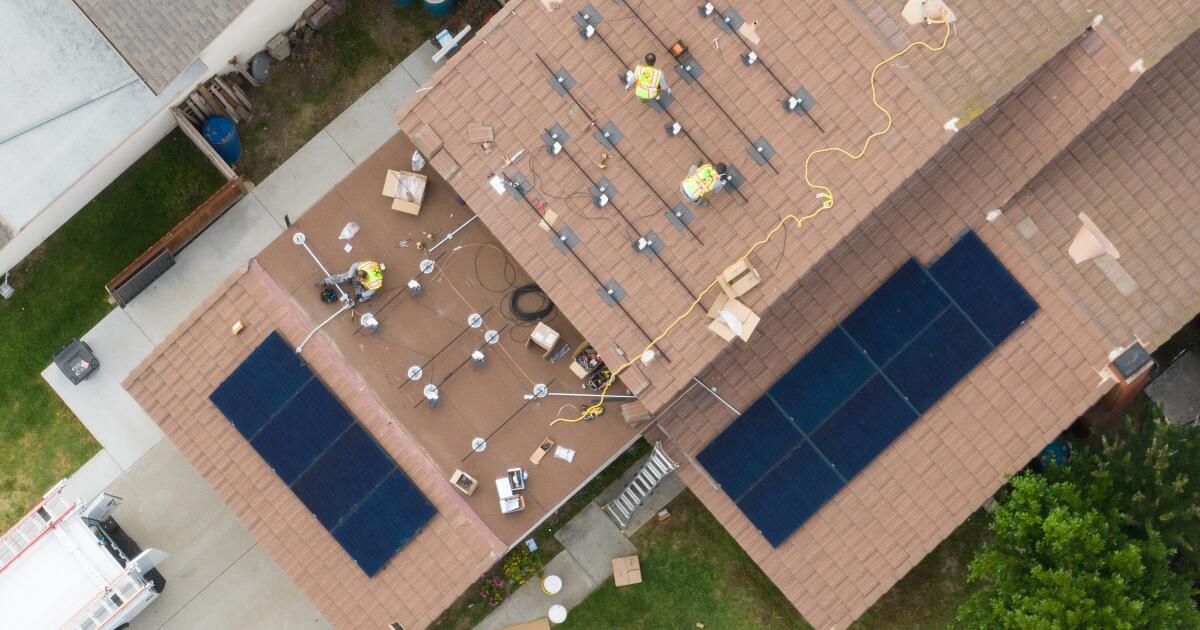- cross-posted to:
- climate@slrpnk.net
- cross-posted to:
- climate@slrpnk.net
But critics insist the costs of those solar panels are beginning to outweigh the benefits.
Incentive payments to homes with solar, they say, have led to higher electricity rates for everyone else — including families that can’t afford rooftop panels. If so, that’s not only unfair, it’s damaging to the state’s climate progress. Higher electricity rates make it less likely that people will drive electric cars and install electric heat pumps in their homes — crucial climate solutions.
The solar industry disputes the argument that solar incentive payments are driving up rates, as do many environmental activists. But Newsom’s appointees to the Public Utilities Commission are convinced, as they made clear Thursday.
“We need to reach our [climate] goals as fast as we can,” said Alice Reynolds, the commission’s president. “But we also need to be extremely thoughtful about how we reach our climate change goals in the most cost-effective manner.”
When I am having a stroke, I don’t stop and calculate of the most cost effective treatment options. I go to the emergency room. We could have done this calculation in 1970 and acted, but that ship has sailed.


Asking the right questions over here. This is pretty clearly a billing method problem - mixing infrastructure maintenance charges in with electrical generation charges so that people who use more electricity pay more for infrastructure maintenance, which seemed like a fair way of doing things in a time before cheap, decentralized power generation.
I’m no industry expert, but it seems like maintenance costs are tied to the potential to deliver electricity rather than the actual delivery - systems need to be sized for peak load. So a fix for the billing problem might be to remove the cost of maintenance from the cost of generation, adding a line item to customer’s bills to cover infrastructure maintenance, and for the size of that charge to be proportional to the potential peak load that customer places on the grid rather than their actual usage.
That’s basically what this ruling is trying to accomplish if you read what they actually said. The way it works right now is like if you could grow a bunch of tomatoes over the summer and drop your extra off at the grocery store, and then when the winter comes around, you just went and grabbed the same amount off their shelves. It’s disregarding the fact that tomatoes cost more in the winter cause they have to be imported or hothouse grown.
Every form of generation has a cost per kwh generated and a startup time. It’s pretty much an inverse relationship. Fastest (and probably most expensive) is probably discharging batteries, slowest is probably nuclear. Things like solar and wind, you just get when you get, so in order to provide uniform service, they need to be coupled with something that can relatively quickly provide energy on demand, which unfortunately means gas, typically.
This new ruling is basically trying to incentivize people to use more of the solar power they generate, which reduces the amount of on-demand energy generation necessary. There’s a lot of untapped potential for how we can adjust time of use, and that’s going to be a big part of adjusting to a more renewables-based energy system. For example, water heaters that only run when there is excess power (they hold heat for a long time), hvac that overshoots your desired temperature rather than running 24/7 to ping-pong around a set point by a degree, and appliances that can be timed.
This particular proposal is trying to end the mandate for the utility to purchase electricity from rooftop solar owners at times when there is no demand for it and no existing infrastructure for storing it.
To cover the expense of having purchased goods they can’t sell, the utility needs to increase their rates, and that cost increase hits people who don’t own solar panels harder than it hits those who do. That makes installing solar panels more financially appealing to people who can afford them, but it also increases costs for the people least able to pay.
And it seems like the utilities are pretty attached to the idea of keeping maintenance fees proportional to actual usage. If I’m reading the article correctly, there was an earlier proposal to require rooftop solar owners to sell 100% of what they produce, and buy 100% of what they use, presumably with a % surcharge for maintenance attached to the purchase. Assuming the utility would pay the current market rate for solar power at the time it was produced, it could be a fair system that would adjust itself automatically based on market forces so the government would not need to update pricing regulations every time a new gas or nuke plant is added to the grid.
Circling back around to the initial point though, we wouldn’t have this problem if more storage infrastructure were built, allowing the utilities to sell the solar power they’re currently mandated to buy. I suspect that energy storage via home appliance usage patterns will only cover part of our storage needs.